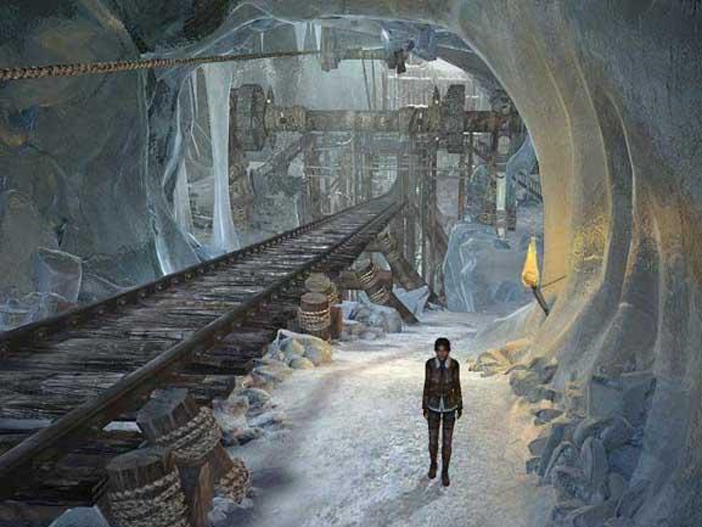In looking at the various art theories we have explored so far, it may be surprising how strong the case for video game inclusion is in certain cases. We have seen that there is no strong reason that video games should not be considered for art by theorists who emphasize representation, Formalism, play, philosophy, politics, or the Artworld. My gut feeling, however, is that despite all of this, most of us are still hesitant to call video games art. The reason for this, I believe, is that none of the theories we’ve discussed so far adequately address the notion of aesthetic experience—of transcendence.
It is fine to talk about formalism and politically-charged art and the Artworld’s current fascination with ideas, but at the end of the day many of us want something that feels more meaningful than satire, or a splash of paint on canvas, or a shovel on display. Granted, this is not a very defined desire, and the academic world may turn up its nose at our lack of sophistication, but still, most people can’t shake the notion that “real art,” when they’ve experienced it, has moved them profoundly, and left them changed.
The closest academic explanation for this strange unrest is found in the idea of aesthetic experience, which David Fenner puts forth as the primal instigator of the study of and categorization of art. Always difficult to define, aesthetic experience has something to do with experiencing a special kind of unity or significance or transcendence that we associate with particularly “moving” encounters with art. Fenner ends up defining aesthetic experience with a set of five criteria,[1] but I think his designations are cryptic at best. Better go to Jeanette Winterson, who throws down academic blabber in favor of wonderfully understandable—if imprecise—prose. Winterson makes clear that aesthetic experience is fundamentally about the transcendent—about encountering The Other in the world presented by art objects. There are those who will call this hocus-pocus, but Winterson has a word for these “realists”:
The realist unmakes the coherent multiple world into a collection of random objects. He thinks of reality as that which has an objective existence, but understands no more about objective existence than that which he can touch and feel, sell and buy. A lover of objects and of objectivity, he is in fact caught in a world of symbols and symbolism, where he is unable to see the thing in itself, as it really is, he sees it only in relation to his own story of the world (Art Objects 143).
Art is about a re-seeing of the world as it really is—about doing what all good fairy tales do, according to Chesterton: “These tales say that apples were golden only to refresh the forgotten moment when we found that they were green” (Orthodoxy 51). To pull again from Winterson: “Children who are born into a tired world as batteries of new energy are plugged into the system as soon as possible and gradually drained away. At the time when they become adult and conscious they are already depleted and prepared to accept a world of shadows” (Art Objects 135)—Art fights the world of shadows, by giving us glimpses of reality, of The Other.
This encountering of The Other encompasses communication between people, as people are essentially soulful and transcendent, and it encompasses the expression of emotion, which comes out of that same transcendence. Tolstoy, Croce, Collingwood, Wordsworth—and perhaps even Plato and Aristotle—should all be happy enough.
What we are lacking in video games is any kind of encounter with The Other, any kind of revelation regarding meaning or purpose or reality: things we do indeed find—things I personally have found—in paintings, in sculptures, in musical compositions, in films, and in all of our other “validated” forms of art.
Actually, I should not say that we find no trace of these things in video games—only that we find a very very small trace: a bit of mucous left by a slug. I have in fact played games that have arrested me emotionally, engaged me, and hinted at a re-imagining of the world of shadows.
The games that have been most successful in this hinting are those which have managed to combine beautiful worlds, engaging stories, and believable characters in essentially cinematic ways. The Longest Journey, Syberia, Sanitarium, Myst, Ico, Shadow of the Colossus, Jade Empire, and perhaps Out of This World, Flashback, The Last Express, The Journeyman Project(s), Alone in the Dark, and the System Shock games. Each of these titles have, in turn, captured something of the joy of exploration, the wonder of discovery, the sacredness of life, the marvel of nature, the struggle for identity, the power of relationship, the danger of isolation, the complexity of human beings, the value of courage, the nature of fear.

Generally a whisper is the closest these games come to revelation (though fear, in its multifarious forms, has been expressed and communicated perhaps too well at times). The reason these games stand as poor artworks at best, in my opinion, is that they fight, rather than use to their advantage the unique property of their medium: their interactive element. “The story is good, and emotional interaction is deep,” a college student says of Sanitarium, “but there are moments of absolute frustration—when you’ve tried everything, and are supposed to pick up an inventory item which is two pixels wide and impossible to see”; all of a sudden interface and gameplay—the heart and soul of the video game medium—have ruined our art piece.
If we are ever going to make video games which stand on their own as great works of art they will have to stand not as wispy and embarrassed imitations of film, but as unique creations with their own strength of being—otherwise they will always be second-class citizens at best, and disposable sources of entertainment at worst.
[1] Object Directness, Felt Freedom, Detached Affect, Active Discovery, Wholeness.

